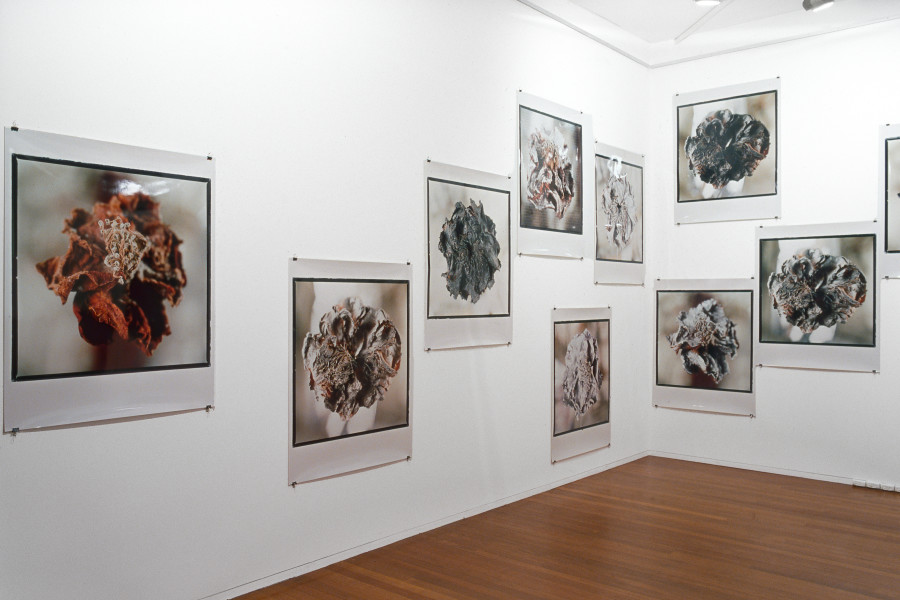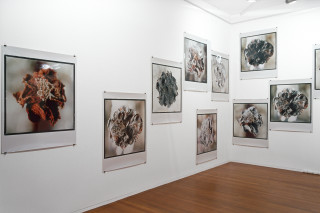Paul Ferman's third solo exhibition at Roslyn Oxley9 Gallery.
Exhibition Dates: 29 March – 21 April 2001
In his grandly-scaled works, Paul Ferman has taken a series of photographs of dried camellia blossoms and turned them into larger-than-life symbols of the nether world that exists between sublime beauty and pointless mundanity. He treats the flowers as found objects rather than as romantic icons. Sprayed with different hues of metallic silver and charcoal coloured car paints, the withered blossoms appear suspended and centralised. The results are captured in a gradually deepening sequence of images that begin with a pale blossom against white, and end in an inky black blossom emerging from the darkest night.
This series is about erasure, transition and transformation. It is a world seemingly reduced to black and white, yet presented as a shifting landscape of realities. In his own way, by concentrating on the fragile physicality of a dead flower, Paul Ferman extends the idea that photography is the documentation of trace memory, as well as the freezing of a transient moment.
This idea of trace memory, and the fixing of the transient, is partly inspired by man's use of plants, animals and natural elements as raw materials to be reinvented as sophisticated garments and objects to enhance the living. The simple flower has been purposely used as a starting point to explore several broader references - from gender issues and the abuse of nature to fashion and the dressing of the dead. Clearly, Ferman has tampered with the accepted notion of short-lived bloom as a sentimental memento mori.
"It is especially interesting to do this exercise with a flower specifically because the accumulation of meanings that flowers have acquired over the centuries", he says.
The same camellias are photographed against fabricated backgrounds, with no reference to their real scale or natural situation. In some of the images, texts from sources as varied as Susan Sontag's, On Photography, and Fowler's Modern English Usages, are superimposed over the image to create a further sense of layering and memory.
The sombre series of colour prints have been hung in a seemingly irregular manner on the gallery walls. However, the positioning of the images is a direct reference to the mechanical nature of the camera, based on the different aperture settings of a camera lens. Hence the spaces between the consecutive pictures frames represent the changes of light, with the shutter speeds affecting the final rhythm of the sequence.
Jonathan Turner 2001




